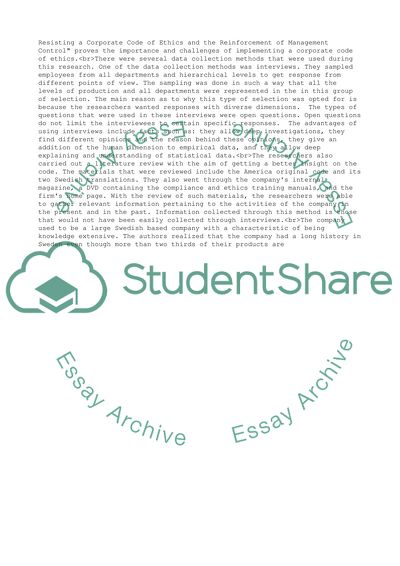Cite this document
(Corporate Code of Ethics and the Reinforcement of Management Essay Example | Topics and Well Written Essays - 2750 words, n.d.)
Corporate Code of Ethics and the Reinforcement of Management Essay Example | Topics and Well Written Essays - 2750 words. https://studentshare.org/management/1815001-management-organizational-design
Corporate Code of Ethics and the Reinforcement of Management Essay Example | Topics and Well Written Essays - 2750 words. https://studentshare.org/management/1815001-management-organizational-design
(Corporate Code of Ethics and the Reinforcement of Management Essay Example | Topics and Well Written Essays - 2750 Words)
Corporate Code of Ethics and the Reinforcement of Management Essay Example | Topics and Well Written Essays - 2750 Words. https://studentshare.org/management/1815001-management-organizational-design.
Corporate Code of Ethics and the Reinforcement of Management Essay Example | Topics and Well Written Essays - 2750 Words. https://studentshare.org/management/1815001-management-organizational-design.
“Corporate Code of Ethics and the Reinforcement of Management Essay Example | Topics and Well Written Essays - 2750 Words”. https://studentshare.org/management/1815001-management-organizational-design.


